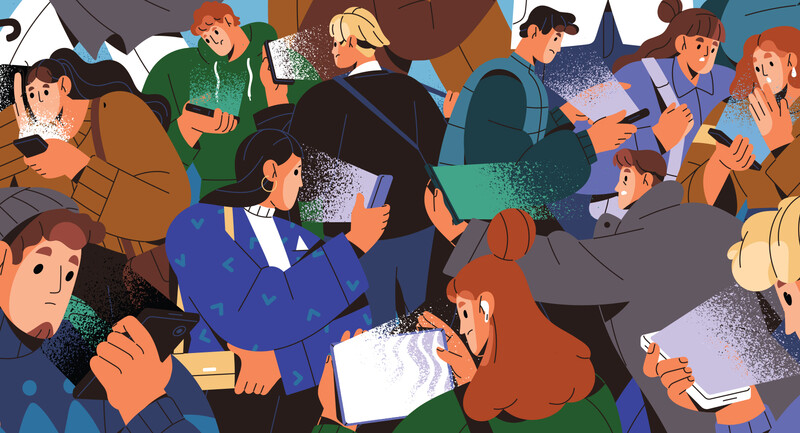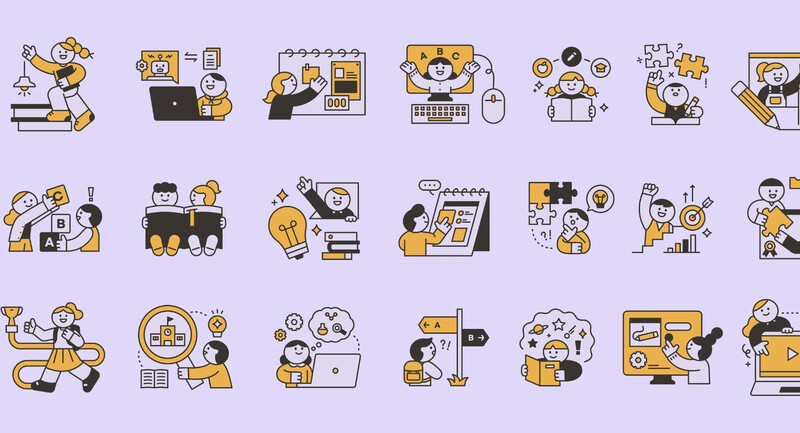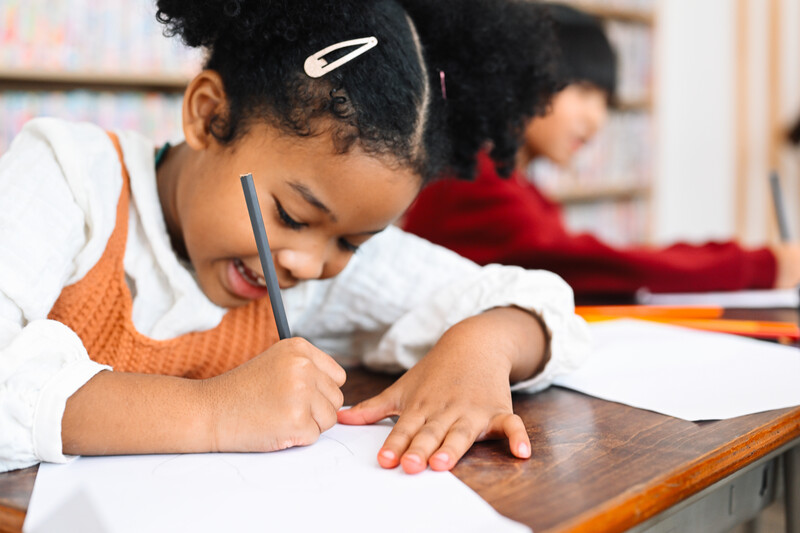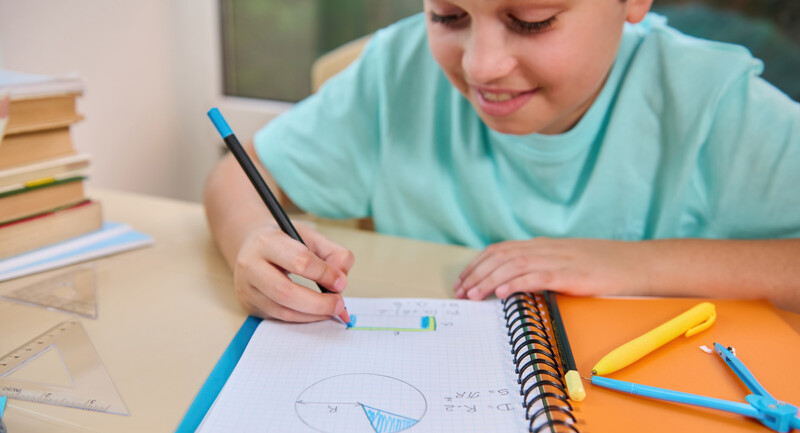A defining moment in my life as a global educator happened when I was working in the Middle East in 2007. As the IT Director in a large international school in Qatar serving mainly local Arabic students, I was working with the Grade 10 technology class. To flatten the classroom walls and connect the students with those outside the country, we embarked on a three-month global collaborative project that joined my students with students in Australia, the United States, and countries in Europe and Asia. In mixed-classroom teams, they communicated online to conduct joint research and create multimedia products on a team topic related to the project's overall theme, "The World Is Flat."
Some of my students were team leaders and learned the joy and pain of monitoring and facilitating a virtual team. One of these leaders was Yara, a capable, intelligent, and forceful student who relished global collaboration and devoted hours to learning about how to get the best out of her team through effective communication.
Yara's team collaborated on the topic, "Google takes over the world." Using an online social community tool called Ning, the team developed personal profiles, blogged, shared media, and interacted in many ways, including synchronous chats. They co-created a wiki page with current news and information about the impact of Google on areas like education, business, and employment. Each student designed an individual multimedia product to communicate his or her ideas from this research; this video had to include an outsourced clip from another student on the team (who was in another school and probably another country), taking design, communication, collaboration, and creation skills to a new level.
In this global project, students collaborated in ways that were completely visible to anyone in the world. We had some awkward moments: One student posted her full address and phone number to the world, and another chose a picture of bottles of beer as his avatar (he liked the pretty pictures!), which was inappropriate, particularly in a culture like Qatar's. But with careful monitoring by student leaders and teachers across all classrooms, we shared, curated, and moved the learning forward.
Back to the defining moment. At a parent-teacher event, I saw a tall, elegant woman in an abaya and hijab marching toward me. She looked emotional and confrontational, and I wondered what I had done wrong. Realizing that it was Yara's mother, I immediately feared a reproach for connecting her daughter with the world.
But no. She was in tears, but tears of joy. She exclaimed how excited her family members in both Bahrain and Qatar were to have Yara participate in this global project, and what a rewarding experience it was for them all to track the student output, learn along with Yara, and support her in her global communication. I realized at that moment that all the work it takes to teach students how to learn in a global classroom was worth it. Global connections can transform learning across communities.
I met up with Yara a few years later. She was an ambassador at a global conference and was studying law—a confident and amazing young woman working passionately on global causes. I felt immensely proud to have contributed to her development, even in a small way.
Why Online Global Collaboration?
Online global collaboration broadly refers to geographically dispersed educators, classrooms, and schools that use online learning environments and digital technologies to learn with others. Such collaboration supports curricular objectives, builds intercultural understandings, develops critical thinking, and grows students' information and communication technology capabilities. Regardless of whether participants are in the same time zone or on the other side of the globe, connecting and collaborating beyond the immediate learning environment is the goal.
In its first 20 years, online global collaboration evolved from the 1.0 version (exchanging information) to the 2.0 version (both exchanging information and sharing products). Now, with the development of faster Internet and better technology tools, online global collaboration, 3.0 allows us to network, collaborate, co-create products, build knowledge together, and share that knowledge with whomever we want around the world. Today's online global collaborations serve many purposes, including the following:
To prepare all learners to be globally competent, able to act on issues of local and global significance. Global collaborations allow people to frame their understanding of the world through connected experiences that go beyond the typical textbook approach and the limitations of face-to-face or local interactions. Such collaborations can turn intercultural differences into intercultural understandings by breaking down stereotypes and challenging attitudes of cultural superiority and socioeconomic dominance.
To provide a focus for digital and online technologies. Online global collaborations build on new tools for mobile and ubiquitous computing. As students engage in online collaborations, they gain an understanding of the power of technology to benefit humanity.
To create a new paradigm for modern learning. Connected learning pedagogies challenge isolation and change the way we teach and learn. Learners connect and interact with peers, experts, and online communities, building collaborations for deeper understanding of the world.
How to Make Global Connections
Online interactions don't always take the form of specific, complex projects with set starting times, timelines, or outcomes. One simple kind of online global collaboration is real-time encounters employing digital tools that provide essential in-person connections. Using tools like Skype, Google hangout, and other video and chat-based apps, teachers can collaborate with other classes, find guest speakers, and take their students on virtual field trips anywhere in the world.
Exploring the Rights of Citizens
For example, global educator Toni Olivieri-Barton's 4th grade students in Colorado Skyped with students in Chile to explore a topic that both were studying—the rights and responsibilities of citizens. The school in Chile provided a list of questions for the Colorado students to research and answer before the Skype call began. During the call, the two groups of students discussed what kinds of school and community rights they had in their respective countries.
Defending the African Rhino
Teachers and students can also dip into existing websites and ongoing projects to take part in exciting opportunities for cultural exchanges through asynchronous sharing. For example, the Travelling Rhinos Project is an award-winning global collaboration started by South African educator Karen Stadler to raise awareness of the plight of the African rhino, which is in danger of extinction through poaching. Karen made five stuffed rhinos and sent them to five elementary school classrooms in different parts of the world. Each rhino travelled with a journal for the class to record local interactions and ideas, and each had a wiki page online. More than 100 classrooms throughout the world have now been a part of this project, joining in conversations about what can be done to save the rhinos. Depending on the teacher, classrooms use different technologies, such as Skype and Google Hangouts, to share their learning about rhinos. Many use blogs and other online tools to share reflections and multimedia around the theme.
Sharing Local Research
In the Cyberfair Project, teams of students conduct research about their local communities and use digital media to share their findings. Peer review is an important part of the collaboration: participating students evaluate six other submitted research projects. The highest-scoring entries in each category are submitted to a panel of international judges, who select the winning projects for the year. Projects that received recognition last year described such topics as the art of hand weaving in Coimbatore, India; wetlands preservation in Sichuan Province, China; and waste management and water pollution in Johor, Malaysia. PenPal Schools
Another online learning opportunity, PenPal Schools, takes the traditional notion of international pen pals to a new level by connecting student pairs with curriculum objectives. Using this site, a teacher can create a six-week course; the site then matches the teacher's students with pen pals in another class, and the students collaborate and share work to complete the course objectives. Current courses include "Walking to Freedom," in which students study civic leaders who advocate for acceptance and equality; "World Explorer," in which students study the life and culture of their pen pal's country; "Protecting the Planet," in which students learn about environmental issues and the inspiring people who work to address them; and more. Global Read Aloud
The award-winning Global Read Aloud, or GRA, occurs annually from October through early November. GRA founder Pernille Ripp selects several specific books to accommodate various age levels. (The 2016 books were Roald Dahl's The BFG, Sara Pennypacker's Pax, Gary D. Schmidt's Orbiting Jupiter, and Jason Reynold's All American Boys; plus an author study of picture-book author Lauren Castillo.) Participating teachers read their selected book aloud to their classes, and then make global connections to share and discuss the book—some classes connect with just one other class; others connect with as many as possible. The GRA community as a whole interacts with the authors and communicates through blog posts, Skype calls, Google docs, and many other online tools. A Week in the Life
Taking the amount of commitment required up a notch, some global communities foster specific, shared learning objectives among a community of learners, usually with an established timeline that dictates workflow and communication patterns. The goal is to foster diverse online global collaborative practices, which may be teacher-led or student-led.
For example, the "A Week in the Life" global project designed by Flat Connections provides a structured opportunity for upper elementary students to connect, communicate, explore global topics and issues, and co-create digital products that share ideas and solutions. Each iteration of the 12-week project is different depending on who joins. For example, the project that ran from February–June of 2016 included classrooms from Costa Rica, Nepal, Australia, the United States, Thailand, and Canada, and the theme was "Global Health and Well-Being Issues." Students explored health and well-being in their local communities, similarities and differences in health and well-being issues around the world, and solutions to researched global issues. Teachers in the project first established a community of global learners among themselves, creating a teacher group within Edmodo to communicate and share. They held regular synchronous online teacher meetings throughout the project to determine project directions and discuss any issues. Students were put into mixed classroom teams, in which they explored such topics as healthy lifestyles and disease and illness prevention. The teams researched and shared local and global ideas and understandings around the topics using Edmodo and Google docs—contributing, editing, and deciding priorities for the final products they would co-create on their topic. Students sometimes met in real-time sessions, depending on the compatibility of time zones, to get to know one another and to discuss the project objectives in person. Teams shared their final products through Voicethread and Padlet.
The "A Week in the Life" project empowers younger students to realize they can collaborate with others beyond their immediate vicinity to address global issues and build solutions. This is often the first time a student (or a teacher) has connected with the world with the purpose of learning not just about the world, but with the world. Students focus on learning how to learn with others in an online environment. They develop essential communication and collaboration skills as well as fluency with digital tools to support this collaboration.
For Our Students' Future
A true global learning environment transforms education so that learning with the world becomes the norm, not a one-time activity. Such an environment provides a variety of online global experiences for every learner every year and flattens the classroom walls (virtual and real) to provide opportunities for personal and social collaboration. As students become older and more digitally fluent and capable, they drive their own projects.
Living and working in the future will require cross-platform skills that will be freelance and flexible, local and global. New technologies such as artificial intelligence and use of personalized devices mean that we must foster digital fluency, information literacy, global competency, and intercultural understanding at all levels of education.
You can be an advocate for online global collaborative learning by harnessing online technologies, breaking through the fear factor of connecting with others beyond your borders, and implementing carefully designed online learning experiences for all ages across the curriculum.
Getting Started with Global Connections
Use these websites to get your feet wet by sharing learning online.
Quadblogging creates an audience for student blogs by grouping four classrooms. Each week, a different class is the focus class and the three other classes visit and comment on the focus class blog.
100 Word Challenge provides a creative writing challenge for students under 16. Students write a creative piece of up to 100 words in response to a prompt posted each week. Students comment on one another's pieces, and individual pieces are recognized each week.
Global Math Task Twitter Challenge. Participating classes use Twitter to share math challenges and answer challenges that others have shared. Classes can join at any time by following the hashtag for their grade level.
Global Monster Project. Students describe a "monster" so that others in the world can then create it and share via video and blog posts.
Skype in the Classroom. Many activities are offered through this Microsoft site, including the popular "Mystery Skype," in which two classrooms Skype and students ask questions to determine where their partners are located in the world. Rich conversations usually take place, leading to further activities organized around this real-time linkup.
iEARN Learning Circles. The iEARN organization connects classrooms for intercultural understanding and interaction that leads to collaboration. Learning circles consist of six–eight classrooms that determine a theme and collaborate on authentic student work, such as ebooks and websites.
Note: For more online projects and resources, see The Global Educator: Leveraging Technology for Collaborative Learning & Teaching by Julie Lindsay (2016). Eugene, OR: ISTE.









